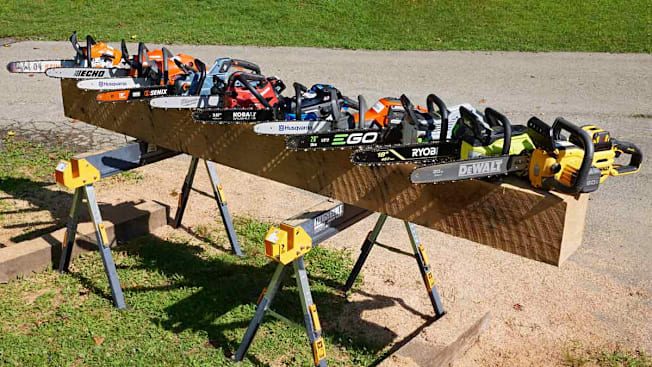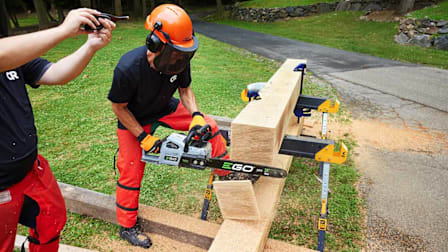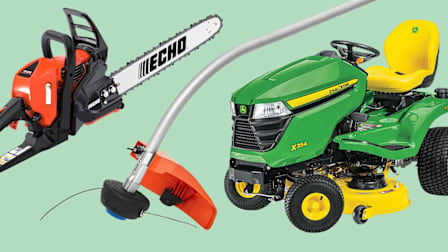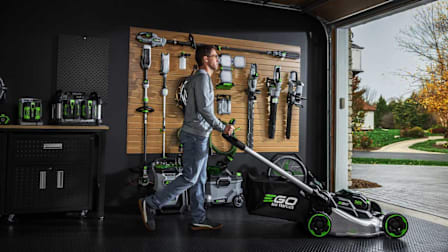Best Chainsaws of 2026, Tested and Reviewed by Experts
More than 50 gas and electric models appear in our current ratings. Here are the top performers, which balance speed with easy handling and safety.
When you shop through retailer links on our site, we may earn affiliate commissions. 100% of the fees we collect are used to support our nonprofit mission. Learn more.

If you live in a rural or heavily wooded area, a chainsaw can be a must-have item. That’s especially true in areas frequently affected by severe storms.
These tools are mechanically simple—essentially an engine or a motor, a handle, and an oblong metal piece called a bar that guides the cutting chain. Yet a good chainsaw does what no other tool can: It lets you efficiently clear fallen branches and trees, prune low tree limbs, and prep firewood.
Best Large Gas Chainsaws
Traditional gasoline chainsaws are best suited for individuals who undertake heavy work, such as cutting large quantities of firewood for winter heating. With big engines, plus a cutting bar and chain typically between 16 and 20 inches long, the best of these chainsaws cut through many larger limbs in a single pass. (The same can now be said for the very best battery-powered chainsaws; see below.) Got hours of work ahead of you? With a gas-powered chainsaw, you simply need to top off the fuel tank to keep it running.
Best Light-Duty Gas Chainsaws
Light-duty gas chainsaws typically max out with a 16-inch cutting bar and generally offer slightly less power. They’re helpful for homeowners in suburban areas (as opposed to more densely wooded rural areas) who want to clear fallen limbs from their yard and possibly cut some wood for an outdoor fire pit. Cutting larger limbs and trees is feasible, but it may take significantly longer to complete the task. To keep these chainsaws going, simply top them off with gas.
Best Battery-Powered Chainsaws
Battery-powered electric chainsaws have vastly improved in recent years. “The best models now cut as well as many of the gasoline-powered saws we’ve tested,” says Matt Schimmenti, the Consumer Reports test engineer in charge of chainsaws. "Generally, the better battery-powered ones are as good as the 18- and 20-inch bar gas-powered models." In fact, our top-rated battery models outscore the best gas chainsaws overall.
Best Corded Electric Chainsaws
You’ll find just a handful of corded electric chainsaws in the marketplace, and we’re no longer testing many of these models. Battery-powered chainsaws are now much more appealing to most people: they offer plenty of power and convenience, are more portable than corded models, and eliminate the risk of accidentally cutting the power cord. If you are shopping for a corded model, you’ll find that they cut as quickly and effectively as smaller gas models.
How We Picked the Best Chainsaws
The best chainsaw for you depends on the size of your yard and the type of cutting you need to do. That’s why we organize our ratings by chainsaw categories: gas, battery, and corded electric. Nevertheless, we believe that all shoppers should expect the following from any type of chainsaw:
- Capable cutting: We expect these machines to cut thick pieces of wood quickly and efficiently.
- Safety: Chainsaws should include adequate fail-safe features to prevent accidents.
- Seamless handling: The chainsaw’s weight and size shouldn’t get in the way of a user’s ability to manipulate it.
- Ease of use: A chainsaw should be designed to allow users to operate and maintain it with ease.
How CR Tests Chainsaws
CR’s engineers have established several processes for evaluating chainsaws.
Our testers measure how long it takes for each saw to cut through 10-inch-thick oak beams. We use oak because it’s one of the hardest woods most users will encounter on their property, and it makes for a particularly demanding test that reveals differences among models. Chainsaws that cut fastest earn the highest ratings for cutting speed.
To assess safety, we check for any kickback during cutting, confirm that there’s a working chain brake, and consider whether a model’s exhaust parts, like the muffler, get hot, which can pose a burn hazard. We also evaluate how protected the cutting chain is from accidental contact during storage.
To evaluate how well a chainsaw handles, our engineers consider how easily it makes horizontal and vertical cuts. We also use a sound meter to measure noise levels, and a judgment to gauge vibration and comfort. Intense vibration can impede a user’s ability to make cuts efficiently.
To determine an ease-of-use score, our engineers inspect a range of features, including how simple the tool is to start, adjust, and maintain.
For each chainsaw’s final Overall Score, we incorporate ratings for predicted reliability and owner satisfaction, which are awarded on a brand (not model) level. These ratings reflect what thousands of CR members tell us in periodic surveys about their experiences with chainsaws they’ve purchased. Specifically, they report whether their chainsaws ever broke or stopped working properly during their first five years of ownership. Members also tell us how likely they are to recommend their chainsaw model to a friend or family member.

































